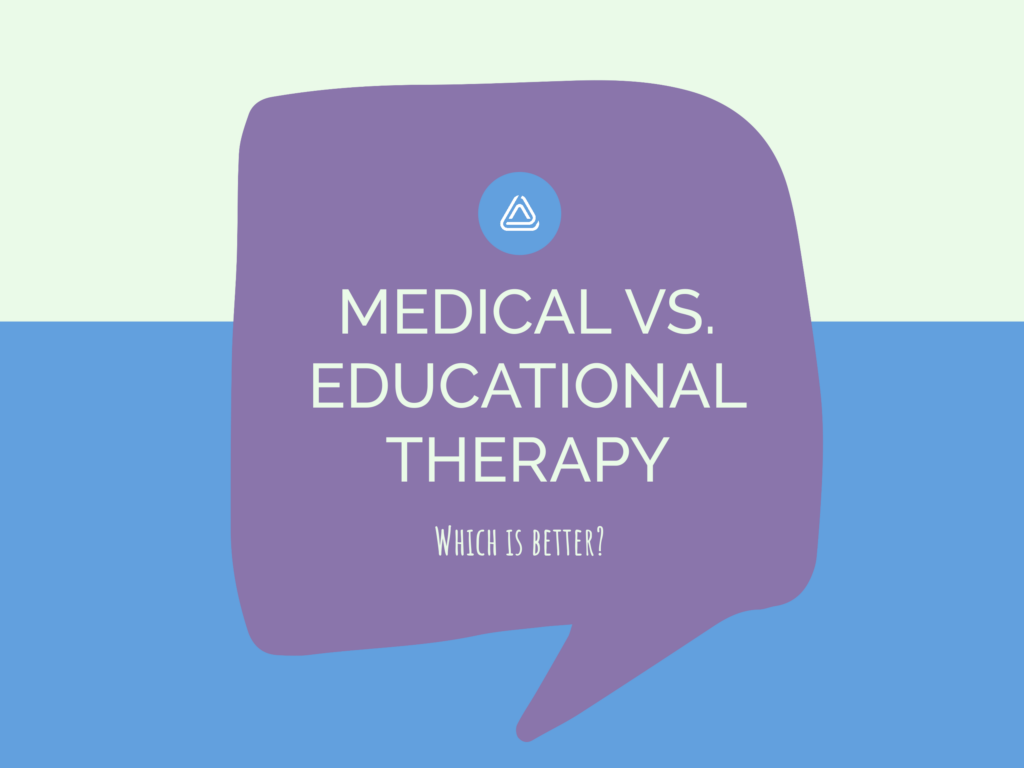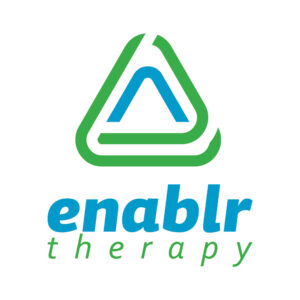Not all therapy models are alike. Therapy, whether speech, occupational, or physical therapy, in a clinic is different from therapy in a school. This doesn’t make one therapy better than the other. They are just different in focus and purpose.
Medical model therapy focuses on addressing diseases, injuries, or conditions of an individual and remediating deficits or delays that result. Educational model therapy provides special education therapy services that support a student’s academics within the school setting. These services fall under the Individuals with Disabilities Education Act (IDEA) which requires that free and appropriate public education is given to eligible students with disabilities.
Differences in Therapy Models
Below is a chart that shows some of the similarities and differences for each model.
| Medical Therapy Model | Educational Therapy Model | |
| Therapy Setting | Hospital, clinic, nursing home, or home health services | Typically within a school unless a specialized program is determined to be needed to support the child’s education. However, children with disabilities ages 0-3 will have services at home until they reach preschool age. |
| Privacy | Protected by Health Insurance Portability and Accountability Act (HIPAA) | Protected by the Family Educational Rights and Privacy Act (FERPA) |
| Referral for Services | Generally initiated by a physician or parent. Many insurances require a doctor’s prescription prior to starting therapy. | Can be initiated by a parent, a member of the child’s education team such as a teacher, or a doctor. Note, although a doctor may refer for an educational evaluation, a physician’s referral does not automatically qualify a student for special education services. |
| Eligibility | The individual therapy provider will evaluate the client using clinical observation and assessments and determine if therapy services would be beneficial. Consideration would be given to a child’s function across all settings and roles. | A student will be evaluated by the educational team to determine if the child meets the criteria for any of the educational eligibility categories. See the US Department of Education for eligibility types. Only the student’s function within the educational environment is considered. |
| Treatment | Treatment is based on a plan of care (POC) developed by the treating therapist. Reassessments may be done as determined by the therapist or funding requirements. The scope of what can be addressed with therapy tends to be broader as it is not limited to a particular setting or role. | The educational team including the parents develop an Individualized Education Program (IEP) that overviews the student’s present levels, establishes goals, and outlines what special education services and accommodations will be provided. This plan is reviewed on a yearly basis. All services and goals must be related to educational needs. Per the US Department of Education, related services such as therapy must demonstrate that the service is “required in order for the student with a disability to benefit from special education.” |
| Funding | Therapy services may be funded through insurance or paid out of pocket by the family. | Special education services are funded through IDEA and are free to the student. Some schools may seek Medicaid reimbursement as well for any student that is Medicaid eligible if parents consent. |
| Progress Reporting | Notes are written for each therapy session. | Therapists and special education providers track data over a period of time and then provide a written progress at set intervals throughout the school year. Generally, these progress notes are sent home at the same time as report cards. |
Educational therapy services are more limited in their scope. As a result, a child may qualify and benefit from medical therapy but may not be eligible for school-based therapy. A child may also receive educational therapy services as well as private medical or clinic-based therapy if the family decides to pursue additional therapy.
Case Study
To illustrate how a child may qualify for medical therapies but not educational therapies, let’s look at an example.
Suzie is a 4th grade student who was evaluated by an occupational therapist (OT) at a private pediatric clinic due to concerns about her fine motor and writing skills. The clinic-based occupational therapist found that Suzie has some delays in fine motor skills based on standardized testing. In particular, Suzie has some endurance issues that impact her ability to sustain writing. The outpatient OT recommended therapy services and introduced cursive writing as an alternative to print.
Suzie’s family requested an occupational therapy evaluation so that OT service could be added to her IEP. The school-based OT evaluated and found that Suzie did not qualify for services. Suzie is able to write 2-3 sentences in print that are legible to an unfamiliar reader. Although Suzie fatigues with longer written assignments, she compensates by typing. Her typing speed is within the normal range. In addition, the school does not utilize a cursive handwriting curriculum. As a result of these findings, no educational impact was demonstrated.
Medical Interventions
There are some circumstances within the school environment where the student should be referred out for diagnostic evaluation and treatment. Let’s say a teacher reports that one of her student’s has a harsh vocal quality, however it does not impact the student’s ability to participate or access the curriculum. A medical SLP and/or ENT would be able to assess the student’s vocal cords and determine a treatment plan should the student have nodules or polyps.
504 Plan Accommodations
Educational services are not strictly limited to those provided to a student on an IEP. A student with a disability who is meeting academic standards may require accommodations to access the school environment. In these circumstances, some therapeutic services may be provided through a 504 Plan. To learn more about 504 Plans, please read our blog 504 Plans: Removing Barriers to Education article.



